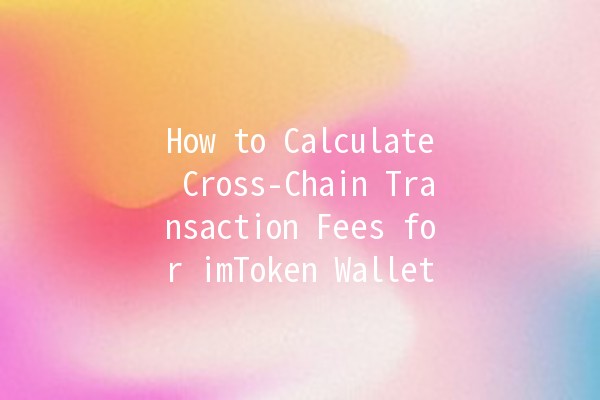In the rapidly evolving world of cryptocurrencies, wallets play a crucial role in the management and transfer of digital assets. Among the plethora of options available today, imToken Wallet has emerged as a premier choice due to its userfriendly interface and robust security features. In this article, we will delve into how transaction fees for crosschain transactions are calculated within the imToken wallet, alongside five practical techniques to improve your productivity in managing these transactions.

Crosschain transactions refer to the process of transferring assets between different blockchain networks. Unlike transactions made within a single blockchain, crosschain transactions face unique challenges, primarily due to the different protocols and architectures of each network. For users of imToken Wallet, understanding how these fees are calculated is pertinent, as it can affect the overall cost of moving assets across various chains.
To calculate the transaction fees for crosschain transactions in imToken Wallet, users can follow these steps:
Here are five productivity techniques to help streamline the management of crosschain transactions in imToken Wallet:
Setting up price alerts can help you make informed decisions about the optimal times to execute transactions. Most wallets and exchanges offer alert features, allowing you to track when specific tokens reach a price threshold. For example, if you're considering moving Ethereum to Binance Smart Chain, an alert can let you know when gas fees drop.
A transaction tracker can be a simple spreadsheet or a dedicated app that records past transactions, including fees. By analyzing this data, you may identify patterns in fees and times that yield lower costs, enabling you to strategize future transactions better.
Staying updated on changes to blockchain protocols or imToken wallet integrations enhances your transaction management. For instance, new optimization methods for gas fees can emerge with protocol upgrades, allowing you to execute transactions at a lower cost.
If feasible, consolidate multiple small transactions into a single larger one. This approach may reduce the overall fee burden as network and protocol fees might be lower when associated with a larger transaction. Always weigh the potential risks and rewards of aggregation, though.
Many blockchain networks support batch transactions, allowing users to send multiple transactions in one go. By using this feature, you can effectively cut down on fees since you’re paying for one transaction instead of several.
The average fee for crosschain transactions can vary significantly based on the source and destination blockchains, as well as current network conditions. For instance, Ethereum can have gas fees ranging from a few dollars to over $100 during peak times. It's essential to check the current fees before initiating a transaction.
Network congestion affects transaction fees because higher demand for processing transactions leads to increased gas prices. When many users are trying to conduct transactions at the same time, miners will prioritize transactions with higher fees, leading to a rise in overall transaction costs.
Yes, crosschain transactions can introduce various security risks, such as the possibility of fraud during the asset transfer between different networks. Utilizing wellestablished protocols and understanding their security measures can mitigate such risks.
Typically, crosschain transactions cannot be reversed once executed. Unlike traditional banking, blockchain transactions are immutable. Therefore, it is vital to ensure all details are correct before confirming the transaction.
To increase your chances of a quicker transaction, consider increasing the gas fee you are willing to pay. A higher fee incentivizes miners to prioritize your transaction. Additionally, timing can be crucial, so sending transactions during offpeak hours may yield faster processing.
If your transaction is stuck, check the transaction status on a blockchain explorer for its current state. If it is still pending, sometimes waiting it out is best. Alternatively, if possible, increasing the gas fee can help expedite the process.
By understanding how to calculate transaction fees and utilizing these productivityenhancing techniques, users can navigate crosschain transactions on the imToken wallet more effectively. This knowledge not only saves money but also streamlines the overall experience of managing digital assets across different blockchain networks.